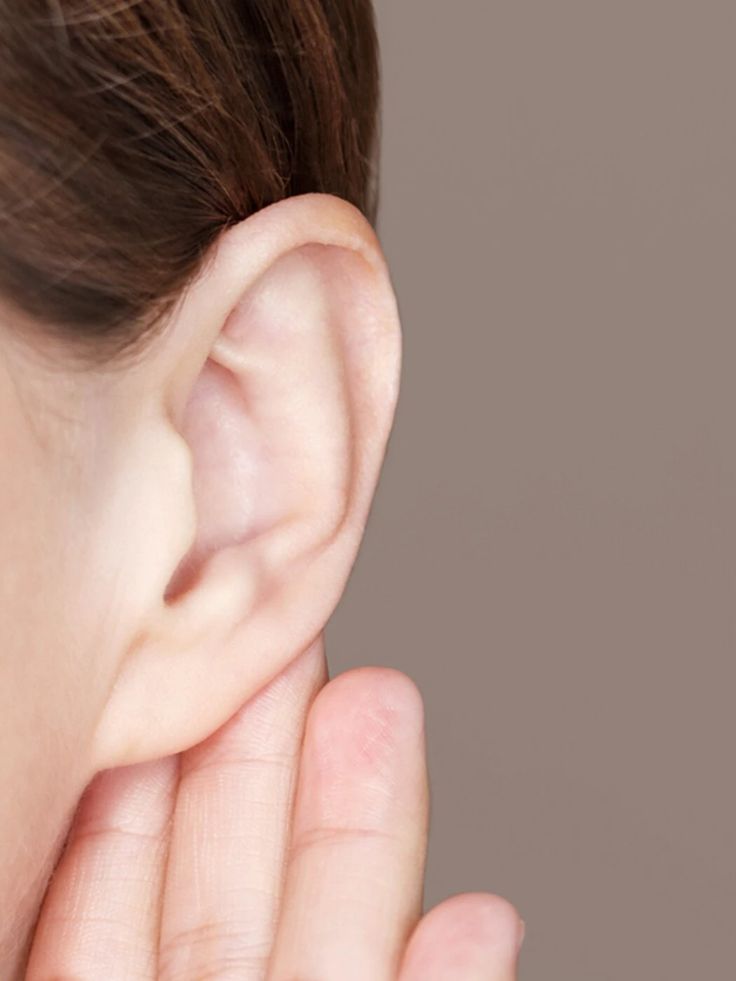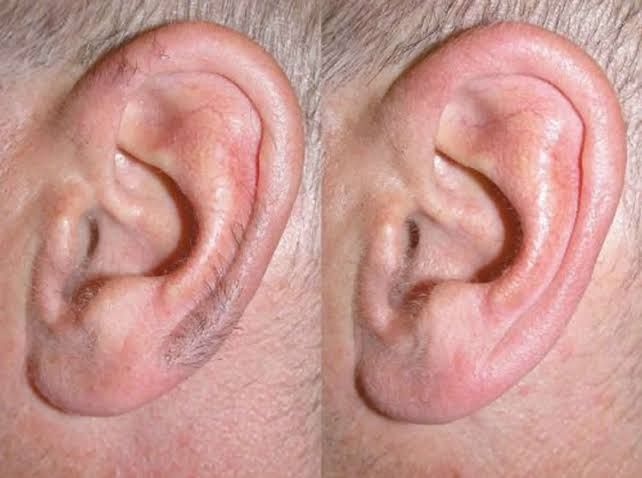As we age, our bodies undergo many changes. One of the more unexpected and often puzzling transformations is the growth of ear hair. For many, this phenomenon may seem like an odd and unwanted consequence of aging, leading to questions about why ear hair starts growing in the first place. Is it just another natural part of growing older, or does it indicate something more significant about your health?
In this article, we’ll explore the reasons why ear hair grows, what it means for your overall health, and how to manage it effectively. From the science of hair growth to the potential hormonal causes, we’ll unravel this peculiar aspect of aging and how it relates to the broader workings of the human body.
The Science of Hair Growth: How It Works
Hair growth is a natural and complex process that is influenced by various factors, including genetics, hormones, and age. Hair follicles, which are tiny pockets beneath the skin, are responsible for producing hair. Each hair follicle has its own growth cycle, which includes three main phases: anagen (growth phase), catagen (transitional phase), and telogen (resting phase). The length of time each follicle spends in the anagen phase determines the length of the hair, while genetic factors play a significant role in determining the density and location of hair follicles on the body.
Typically, hair follicles are located throughout the body, except for the palms, soles of the feet, and some other specialized areas. As we age, changes in hormones, particularly androgens (a group of hormones including testosterone), can trigger the growth of new hair in areas where it previously didn’t grow, such as the ears, nose, and eyebrows.
While the growth of ear hair may be an inevitable part of aging, it’s essential to understand the underlying biological processes that govern this change.
Why Does Ear Hair Grow? Hormonal Changes and Aging
One of the primary reasons for the growth of ear hair, especially in men, is changes in hormone levels as we age. The most significant contributor to this is an increase in androgen levels. Androgens, which include hormones like testosterone, are responsible for the development of male physical characteristics such as facial hair, deepening of the voice, and increased muscle mass.
As men grow older, testosterone levels begin to fluctuate. In particular, a decrease in testosterone levels relative to estrogen levels (which remains stable) can lead to an imbalance. This imbalance may cause the hair follicles in areas like the ears, nose, and eyebrows to become more sensitive to androgenic stimulation, leading to the growth of thicker or more visible hair in these regions.
Interestingly, while testosterone is primarily known as a male hormone, women also produce androgens, albeit in smaller amounts. As women age, particularly after menopause, their estrogen levels drop, and their testosterone-to-estrogen balance may shift. This can also lead to the growth of unwanted hair in areas like the ears, chin, or upper lip.
Genetics and Family History: A Major Factor in Ear Hair Growth
Your genetic makeup plays a significant role in how your body responds to hormonal changes, including the growth of ear hair. If you have family members—particularly male relatives—who experience significant ear hair growth as they age, it’s likely that you will experience the same. Genetics determine the density and distribution of hair follicles across your body, including your ears.
Family history also dictates how sensitive your hair follicles are to hormonal changes. Some individuals have hair follicles that are more responsive to androgens, causing excessive hair growth in areas like the ears, nose, and chin. Others may not experience this issue at all.
While genetics largely dictates the extent of ear hair growth, it’s not just men who face this challenge. Women, especially those going through menopause, can also experience an increase in ear hair due to hormonal shifts, although it is typically less pronounced.
The Role of Aging: Why It Becomes More Common with Time
Aging is another major factor that contributes to the growth of ear hair. As the body ages, it undergoes various biological changes that affect hair follicles. The production of certain hormones, such as estrogen and testosterone, decreases, leading to alterations in the way hair grows. In particular, a decrease in estrogen levels in women and a shift in the testosterone-to-estrogen ratio in both men and women contribute to the growth of unwanted hair in certain areas.
Older adults may notice that not only does ear hair become more visible, but it may also grow faster and thicker over time. This is because, as we age, the production of growth factors like IGF-1 (Insulin-like Growth Factor 1) decreases, affecting hair growth patterns.
Additionally, hair that grows in areas like the ears may become coarser and more noticeable because of a loss of collagen and elastin in the skin. As skin loses its elasticity with age, hair follicles may protrude more visibly, making ear hair appear more prominent.
Is Ear Hair Growth a Sign of a Health Problem?

In most cases, the growth of ear hair is a natural part of aging and is not a cause for concern. However, in some instances, excessive ear hair growth can be a sign of an underlying medical condition. Here are some potential health issues that could cause abnormal ear hair growth:
1. Hormonal Imbalance
As previously mentioned, hormonal fluctuations play a major role in ear hair growth. Conditions such as polycystic ovary syndrome (PCOS) in women can lead to higher levels of androgens, causing unwanted hair growth in areas such as the face, ears, and chin. In men, an imbalance in testosterone levels can also contribute to excessive hair growth in certain areas.
2. Tumors or Other Health Conditions
In rare cases, excessive hair growth may be linked to tumors or other serious health conditions. For example, tumors that affect the pituitary gland or adrenal glands may result in an overproduction of androgens, leading to hirsutism (excessive hair growth). If ear hair growth is sudden, excessive, or associated with other symptoms such as weight gain, fatigue, or skin changes, it’s important to consult with a doctor to rule out underlying conditions.
3. Medications
Certain medications can cause hormonal changes that lead to increased hair growth. For example, anabolic steroids, which are sometimes used by bodybuilders to increase muscle mass, can result in increased body and facial hair growth, including in the ears. Additionally, some medications used to treat conditions like epilepsy, depression, and thyroid disorders can also affect hair growth patterns.
4. Genetics and Family History
As mentioned earlier, genetics play a key role in hair growth patterns. If your family members tend to experience significant ear hair growth as they age, you may be genetically predisposed to the same. However, this is not a health concern unless it’s accompanied by other unusual symptoms.
In general, unless you notice rapid changes or other concerning signs in your health, ear hair growth is typically a harmless result of aging or hormonal changes.
How to Manage and Trim Ear Hair: Tips and Techniques
While ear hair growth is a natural part of aging, many individuals prefer to manage or remove it. There are several methods available for trimming and maintaining ear hair, depending on your comfort level and preferences.
1. Trimming with Scissors
One of the simplest and safest ways to manage ear hair is by trimming it with a small pair of grooming scissors. Be sure to use rounded-tip scissors to avoid injury to the delicate skin in your ears. Trim the hair carefully, making sure not to overdo it or cause irritation.
2. Using an Ear Hair Trimmer
Many men and women opt for specialized ear hair trimmers, which are designed specifically to trim hair in the ears safely. These devices are often small, battery-operated, and feature a rounded head to prevent nicks and cuts. They can be found in most grooming kits and are easy to use.
3. Waxing
Some people prefer to wax their ear hair for longer-lasting results. While waxing can be effective, it can be painful and may cause irritation. It’s important to use professional waxing services or carefully follow instructions if you decide to do it at home.
4. Laser Hair Removal
For those who are tired of dealing with ear hair growth, laser hair removal is an option. This method uses concentrated light to target hair follicles and prevent further hair growth. Laser treatments are typically effective but can be costly and require multiple sessions.
5. Avoid Plucking
Plucking ear hair can be tempting but is not recommended, as it can cause irritation and even infection. The skin inside your ears is sensitive, and plucking may damage hair follicles or lead to ingrown hairs.
Conclusion: Embrace Your Body’s Changes
The growth of ear hair is a common and natural part of aging. It’s typically a result of hormonal changes, genetics, and the passage of time. While ear hair growth can sometimes be surprising or even frustrating, it’s important to remember that it’s just one of many physical changes that occur as we grow older.
By understanding the science behind ear hair growth and recognizing when it might indicate an underlying health issue, you can make informed decisions about how to manage it. Whether you choose to trim, wax, or simply embrace your body’s changes, remember that ear hair is just a small part of the beautiful and intricate process of aging.



